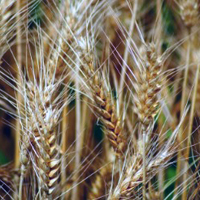Mechanical and chemical weeding effects on the weed structure in durum wheat

Accepted: 28 March 2020
HTML: 9
All claims expressed in this article are solely those of the authors and do not necessarily represent those of their affiliated organizations, or those of the publisher, the editors and the reviewers. Any product that may be evaluated in this article or claim that may be made by its manufacturer is not guaranteed or endorsed by the publisher.
A three-year field experiment was performed to study weed infestation of durum wheat at the stage of emergence and full maturity. Two weeding systems (WS) were used in the post-harvest period: i) mechanical weeding (MW); and ii) chemical weeding (CW). In the MW system, soil underwent shallow ploughing at a depth of 10-12 cm and double harrowing (after ploughing and 3 weeks later), whereas glyphosate only was used in the CW system. In the springtime, in both MW and CW systems, a tillage set consisting in a cultivator, a string roller and harrowing was used. Overall, the number of weeds m2, the number of weed species and the value of weed diversity indices were always higher in MW than in the CW systems in each study year at both the emergence and full maturity stage of durum wheat. The study demonstrated that at the stage of durum wheat emergence, more weeds per m2 occurred in the MW than in the CW system in each study year. Moreover, the MW systems was characterized by a higher number of weed species as well as by a higher value of weed diversity index compared to the CW system.
How to Cite
PAGEPress has chosen to apply the Creative Commons Attribution NonCommercial 4.0 International License (CC BY-NC 4.0) to all manuscripts to be published.

 https://doi.org/10.4081/ija.2020.1559
https://doi.org/10.4081/ija.2020.1559



